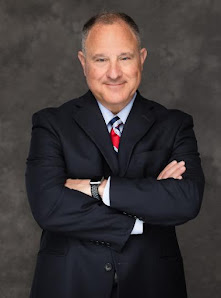Adam Liptak writes in The New York Times:
There is no universally accepted definition of a
constitutional crisis, but legal scholars agree about some of its
characteristics. It is generally the product of presidential defiance of laws
and judicial rulings. It is not binary: It is a slope, not a switch. It can be
cumulative, and once one starts, it can get much worse.
It can also be obvious, said Erwin Chemerinsky, dean of the
law school at the University of California, Berkeley.
“We are in the midst of a constitutional crisis right now,”
he said on Friday. “There have been so many unconstitutional and illegal
actions in the first 18 days of the Trump presidency. We never have seen
anything like this.”
He ticked off examples of what he called President Trump’s
lawless conduct: revoking birthright citizenship, freezing federal spending,
shutting down an agency, removing leaders of other agencies, firing government
employees subject to civil service protections and threatening to deport people
based on their political views.
That is a partial list, Professor Chemerinsky said, and it
grows by the day. “Systematic unconstitutional and illegal acts create a
constitutional crisis,” he said.
The distinctive feature of the current situation, several
legal scholars said, is its chaotic flood of activity that collectively amounts
to a radically new conception of presidential power. But the volume and speed
of those actions may overwhelm and thus thwart sober and measured judicial
consideration.
It will take some time, though perhaps only weeks, for a
challenge to one of Mr. Trump’s actions to reach the Supreme Court. On Monday,
a federal judge said the White House had defied
his order to release billions of dollars in federal grants, marking
the first time a judge has expressly declared that the Trump administration is
disobeying a judicial mandate.
It remains to be seen whether Mr. Trump would defy a ruling
against him by the justices.
“It’s an open question whether the administration will be as
contemptuous of courts as it has been of Congress and the Constitution,” said
Kate Shaw, a law professor at the University of Pennsylvania. “At least so far,
it hasn’t been.”
That could change. On Sunday, Vice President JD Vance struck
a confrontational tone on social media. “Judges aren’t allowed to control
the executive’s legitimate power,” he wrote.
Professor Shaw said a clash with the courts would only add
to a crisis that is already underway. “A number of the new administration’s
executive orders and other executive actions are in clear violation of laws
enacted by Congress,” she said.
“The administration’s early moves,” she added, “also seem
designed to demonstrate maximum contempt for core constitutional values — the
separation of powers, the freedom of speech, equal justice under law.”
Pamela Karlan, a law professor at Stanford, added that a
crisis need not arise from clashes between the branches of the federal
government.
“It’s a constitutional crisis when the president of the
United States doesn’t care what the Constitution says regardless whether
Congress or the courts resist a particular unconstitutional action,” she said.
“Up until now, while presidents might engage in particular acts that were
unconstitutional, I never had the sense that there was a president for whom the
Constitution was essentially meaningless.”
The courts, in any event, may not be inclined or equipped to
push back. So much is happening, and so fast, that even eventual final rulings
from the Supreme Court rejecting Mr. Trump’s arguments could come too late.
After the U.S. Agency for International Development or the Consumer Financial
Protection Bureau are disassembled, say, no court decision can recreate them.
In many cases, of course, the Supreme Court’s six-member
conservative majority may be receptive to Mr. Trump’s arguments. Its decision in July granting him substantial
immunity from prosecution embraced an expansive vision of the
presidency that can only have emboldened him.
Members of that majority are, for instance, likely
to embrace the president’s position that he is free to fire leaders of
independent agencies.
To read more CLICK HERE








No comments:
Post a Comment